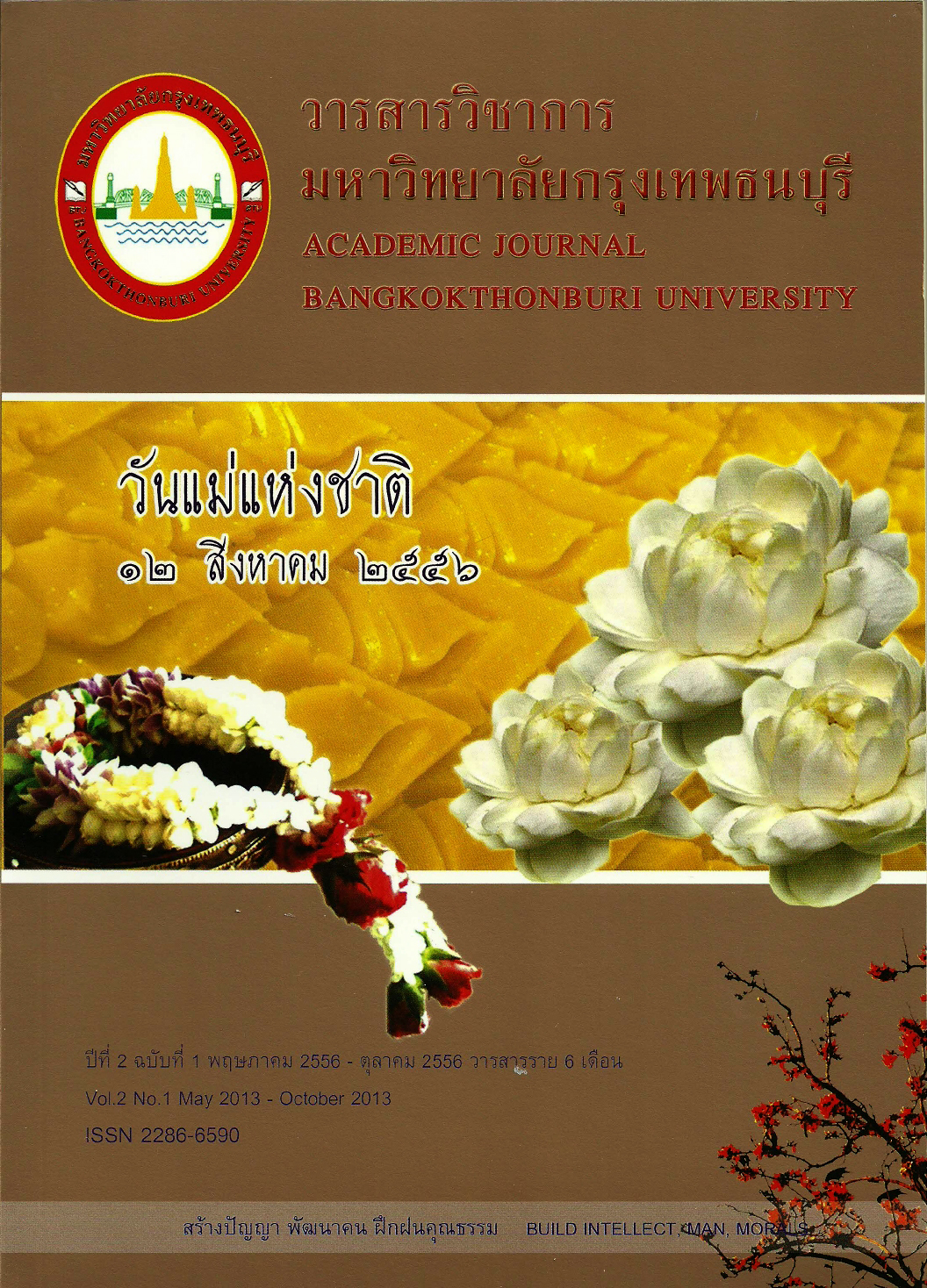รายงานการศึกษาวิจัย เรื่อง รูปแบบการบริหารจัดการโรงเรียน ขนาดเล็กที่มีความเป็นไปได้ความเหมาะสมเกิดประสิทธิภาพ และประสิทธิผล สังกัดสำนักงานเขตพื้นที่การศึกษาประถมศึกษา อุบลราชธานี เขต 1
Main Article Content
Abstract
การศึกษาวิจัย เรื่อง รูปแบบการบริหารจัดการสถานศึกษาขนาดเล็กที่มีความเป็นไปได้ เหมาะสม เกิดประสิทธิภาพ และประสิทธิผล สังกัดสำนักงานเขตพื้นที่การศึกษาประถมศึกษาอุบลราชธานี เขต 1 มีวัตถุประสงค์ ดังนี้
(1) เพื่อศึกษาสภาพปัจจุบันของการบริหารจัดการโรงเรียนขนาดเล็ก สังกัดสำนักงาน เขตพื้นที่การศึกษาประถมศึกษาอุบลราชธานี เขต 1 (2) เพื่อศึกษาความคิดเห็นของผู้มีส่วนได้ส่วนเสีย เกี่ยวกับรูปแบบการบริหารจัดการโรงเรียนขนาดเล็กที่มีความเป็นไปได้ เหมาะสม เกิดประสิทธิภาพและ ประสิทธิผล (3) เพื่อนำเสนอข้อเสนอเชิงนโยบายเกี่ยวกับรูปแบบการบริหารจัดการโรงเรียนขนาดเล็ก ที่มีความเป็นไปได้ เหมาะสม เกิดประสิทธิภาพและประสิทธิผล ประชากร ผู้วิจัยใช้โรงเรียนขนาดเล็กใน สังกัดสำนักงานเขตพื้นที่การศึกษาประถมศึกษาอุบลราชธานี เขต 1 จำนวน 166 แห่ง เป็นหน่วยที่ใช้ใน การศึกษา ผู้ให้ข้อมูล ประกอบด้วย ครูและบุคลากรทางการศึกษา คณะกรรมการสถานศึกษา ผู้มี ส่วนได้เสีย รวม 1,685 คน การศึกษาวิจัยแบ่งออกเป็น 5 ระยะ คือ ระยะที่ 1 ศึกษาจากเอกสารเพื่อ ศึกษาข้อมูลพื้นฐานโรงเรียนขนาดเล็ก ระยะที่ 2 การศึกษาสภาพปัจจุบัน ปัญหา และรูปแบบการบริหาร จัดการสถานศึกษาขนาดเล็ก ระยะที่ 3 ศึกษาสัมภาษณ์เชิงลึก ระยะที่ 4 การจัดทำประชาพิจารณ์ และ ระยะที่ 5 การจัดสนทนากลุ่มเพื่อรับฟังข้อคิดเห็นจากผู้ทรงคุณวุฒิ เครื่องมือที่ใช้ในการวิจัย ประกอบ ด้วย แบบสอบถาม แบบสัมภาษณ์ แบบบันทึกการสนทนากลุ่ม สถิติที่ใช้ในการวิเคราะห์ข้อมูล ได้แก่ ร้อยละ และสถิติเชิงพรรณนาตรวจสอบความถูกต้องแบบสามเส้า (Triangulation) ผลการศึกษาวิจัย ได้ดังนี้ (1) สภาพปัจจุบันของการบริหารจัดการโรงเรียนขนาดเล็ก พบว่า ด้านค่าใช้จ่าย โรงเรียนขนาดเล็ก มีค่าใช้จ่ายในการจัดการศึกษา โดยเฉลี่ย 46,026.49 บาทต่อคนต่อปี มีอัตราส่วนครู 1 คน ต่อนักเรียน 11.83 คน สถานศึกษาขนาดเล็ก ร้อยละ 78.92 มีครูไม่ครบชั้น เรียงตามลำดับจากมากไปหาน้อย ดังนี้ การเรียนการสอนปกติ การเรียนรวม การสอนแบบคละชั้น ครูอาสา หมุนเวียนสื่อการเรียนการสอน ครูหมุนเวียน และศูนย์การเรียนรู้ คิดเป็นร้อยละ 36.14, 29.52, 13.86, 7.23, 6.02, 5.42, และ 1.81 ตามลำดับ และปัญหา ในด้านการบริหารจัดการที่พบมากที่สำคัญ 4 ลำดับแรก ได้แก่ ขาดเงินงบประมาณ ขาดสื่อการจัดการเรียนรู้ที่ทันสมัย ขาดการระดมทรัพยากร ขาดอาคารประกอบที่จำเป็น ( =4.94)
(2) รูปแบบการบริหารจัดการโรงเรียนขนาดเล็กที่มีความเป็นไปได้ เหมาะสม มี 6 รูปแบบ เรียง ตามลำดับจากมากไปหาน้อยที่สุดได้ดังนี้ การสอนแบบคละชั้น การเรียนรวม ครูอาสา หมุนเวียนสื่อ การเรียนการสอน ครูหมุนเวียน และศูนย์การเรียนรู้ ส่วนรูปแบบที่มีความเหมาะสมและเป็นไปได้น้อย มากแต่เป็นรูปแบบที่มีประสิทธิภาพและประสิทธิผลมากที่สุดมี 2 รูปแบบ คือ การยุบรวมโรงเรียน และ การเลิกล้มโรงเรียน แต่จากการประชาพิจารณ์เพื่อรับฟังข้อคิดเห็นจากผู้มีส่วนได้ส่วนเสีย พบว่า ได้รับ การต่อต้านอย่างกว้างขวาง
(3) ข้อเสนอแนะเชิงนโยบายเกี่ยวกับรูปแบบการบริหารจัดการโรงเรียนขนาดเล็กที่มีความเป็น ไปได้ เหมาะสม เกิดประสิทธิภาพและประสิทธิผล พบว่า รูปแบบการสอนแบบคละชั้น เป็นรูปแบบ ที่สามารถ ดำเนินการได้ทันที รองลงไป คือ การหมุนเวียนสื่อการเรียนการสอน ส่วนการยุบรวม และการ เลิกล้มโรงเรียนเป็นรูปแบบที่มีประสิทธิภาพและประสิทธิผลมากที่สุดแต่มีความเหมาะสมและเป็นไปได้ น้อยมากควรดำเนินการเป็นลำดับสุดท้ายและเปิดโอกาสให้ผู้เกี่ยวข้องมีส่วนร่วมในการตัดสินใจ ทุกขั้นตอน
A Report of the Research on the Possible, Suitable, Effi cient and
Effective Model of the Administration of the Small-Sized Schools
Affi liated to Ubon Ratchathani’s Educational Service Area 1
The research aimed to study 1) the current conditions of the administration of the small-sized schools affiliated to Ubon Ratchathani’s Educational Service Area 1; 2) the opinions of the stakeholders regarding the practical, suitable, efficient and effective model of the administration of the small-sized schools; 3) to propose the policy concerning the practical, suitable, efficient and effective model of the administration of the small-sized schools. The populations in the research were 1,685 teachers, educational personnel, the school commission members and the stakeholders from 166 schools. The research was divided into five stages: stage 1 dealt with a study of basic information of the small-sized schools, stage 2 studied the current conditions, the problems and the model of the administration of the small-sized schools, stage 3 investigated the in-depth interviews, stage 4 conducted a public hearing and stage 5 was concerned with the focus group. The research instruments consisted of the questionnaire, the interviews, and the record of the focus group. Statistics used in data analysis were percentage, and a descriptive statistics.
The researching findings were as follows.
1) As regards the current conditions of the administration of the small-sized schools, it was found that the small-sized schools spent the average of 46,026.49 baht per head; the teacher-student ratio was one teacher per 11.83 students. The small-sized schools (78.92) did not have enough teachers.
In view of the model of the administration, it was found that 166 schools under study had seven types of administration as illustrated in the descending order: learning-teaching (36.14), co-learning (29.52), mixed class (13.86), volunteer teachers (7.23), circulation of the instructional media (6.02), circulation of teachers (5.42) and the learning center (1.81). The problems found in the administration were lack of budget, unavailability of the new learning media, lack of the resources and lack of the buildings (X=4.92).
2. There were six practical, suitable and efficient models of the administration as given in the order of significance: mixed class, co-learning, volunteer teachers, circulation of instructional media, teaching in turn, and the learning centers. The models which were least suitable and possible, but most efficient were the merger and dissolving the schools. Based on the public hearing, there was a widespread opposition against the idea.
3) As for the recommendations for the policy on the possible, suitable and efficient model of the administration, it was found that the teaching based on a mixed class could be immediately implemented, followed by a circulation of the instructional media. The dissolving and merger of the schools was the most efficient model, but the least possible one. It should be used as a last resort. Those concerned should participate in all steps of making decision.


